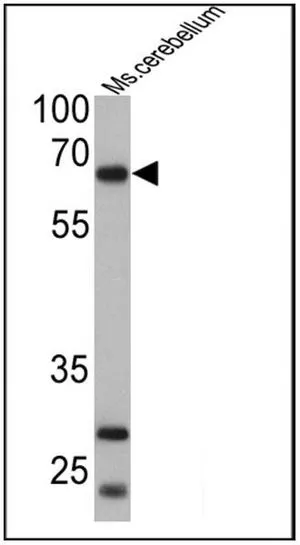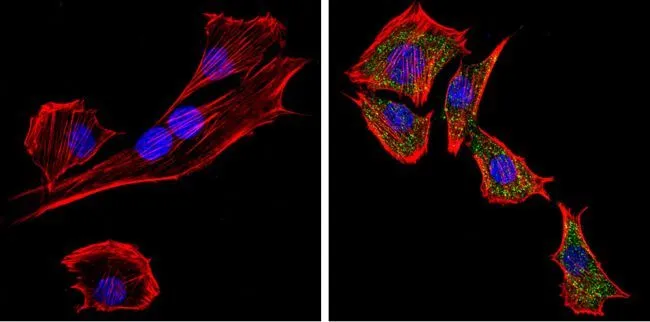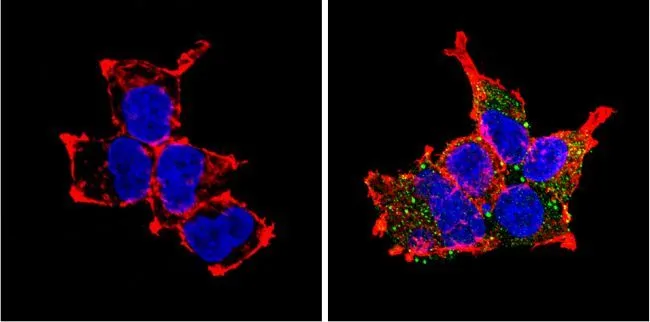
WB analysis of 25 ug of mouse cerebellum cell lysates using GTX23533 PC2 antibody. Dilution : 1:500
PC2 antibody
GTX23533
ApplicationsImmunoFluorescence, Western Blot, ImmunoCytoChemistry
Product group Antibodies
ReactivityHuman, Mouse
TargetPcsk2
Overview
- SupplierGeneTex
- Product NamePC2 antibody
- Delivery Days Customer9
- Application Supplier NoteWB: 2 microg/ml. ICC/IF: 1:20-1:200. *Optimal dilutions/concentrations should be determined by the researcher.Not tested in other applications.
- ApplicationsImmunoFluorescence, Western Blot, ImmunoCytoChemistry
- CertificationResearch Use Only
- ClonalityPolyclonal
- Concentration1 mg/ml
- ConjugateUnconjugated
- Gene ID18549
- Target namePcsk2
- Target descriptionproprotein convertase subtilisin/kexin type 2
- Target synonyms6330411F23Rik; AI839700; KEX2-like endoprotease 2; Nec; Nec-; NEC 2; Nec2; Nec-2; neuroendocrine convertase 2; PC; PC2; Php; Phpp-2; prohormone convertase 2; proprotein convertase 2; SP; SPC2
- HostRabbit
- IsotypeIgG
- Protein IDP21661
- Protein NameNeuroendocrine convertase 2
- Scientific DescriptionThe subtilisin-like prohormone convertase (PC) family is a group of cellular enzymes that cleave most prohormones and neuropeptide precursors. Numerous other cellular proteins, some viral proteins, and bacterial toxins that are transported by the constitutive secretory pathway are also targeted for maturation by PCs. PC family members share structural similarities, which include a heterogeneous ~10 kDa amino-terminal proregion, a highly conserved ~55 kDa subtilisin-like catalytic domain, and carboxyl-terminal domain that is heterogeneous in length and sequence. These enzymes become catalytically active following proregion cleavage within the appropriate cellular compartment. The subcellular localization of PC family members varies. Immunolocalization studies show that PC1 is found in the perinuclear region as well as the trans-Golgi network, whereas PC2 can be found in the trans-Golgi network as well as diffusely distributed in the peripheral cytoplasm.
- ReactivityHuman, Mouse
- Storage Instruction-20°C or -80°C,2°C to 8°C
- UNSPSC12352203
References
- Dense core vesicle markers in CSF and cortical tissues of patients with Alzheimers disease. Barranco N et al., 2021 Sep 26, Transl NeurodegenerRead more
- PTBP1 is required for glucose-stimulated cap-independent translation of insulin granule proteins and Coxsackieviruses in beta cells. Knoch KP et al., 2014 Aug, Mol MetabRead more
- Wolfram syndrome 1 gene (WFS1) product localizes to secretory granules and determines granule acidification in pancreatic beta-cells. Hatanaka M et al., 2011 Apr 1, Hum Mol GenetRead more


